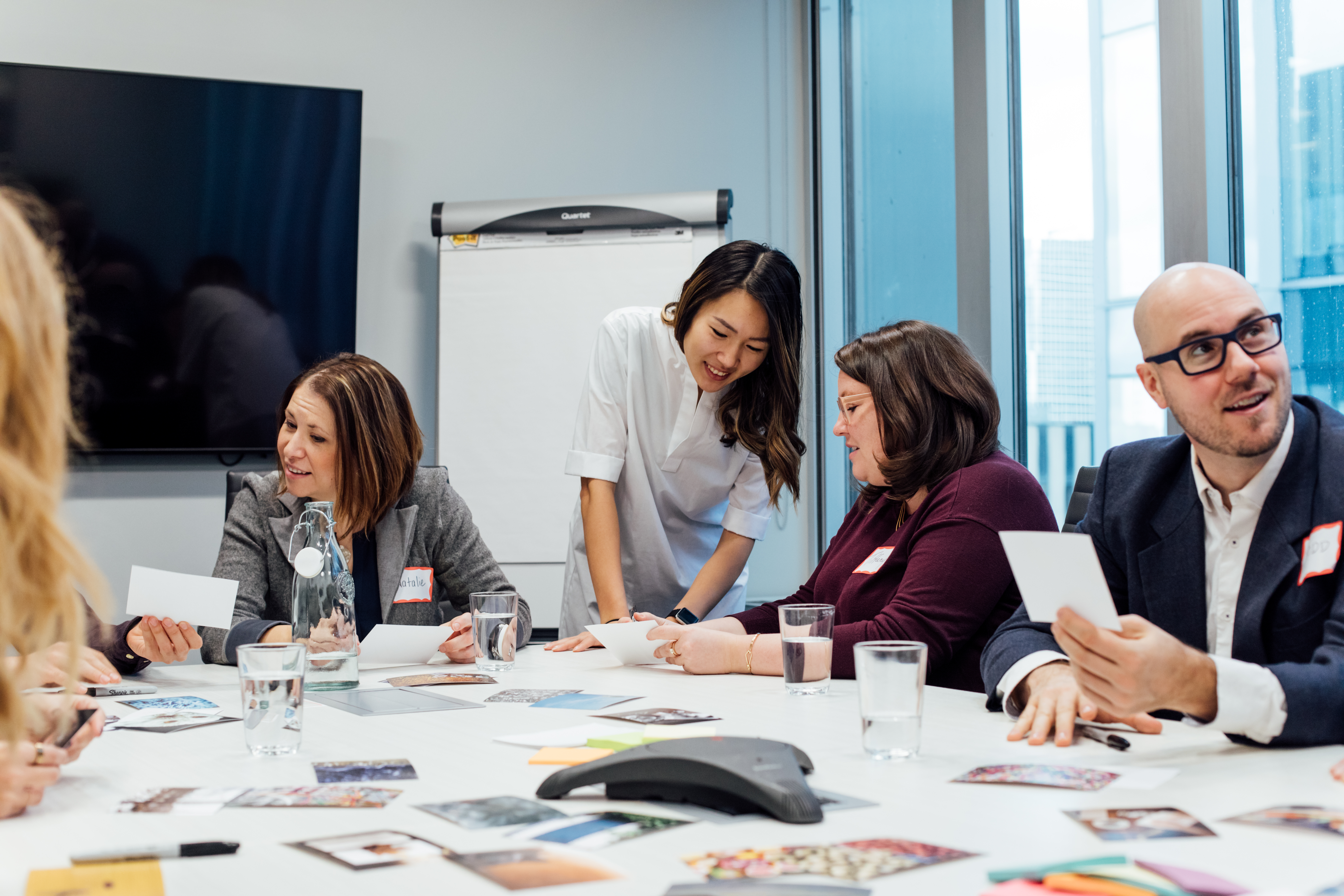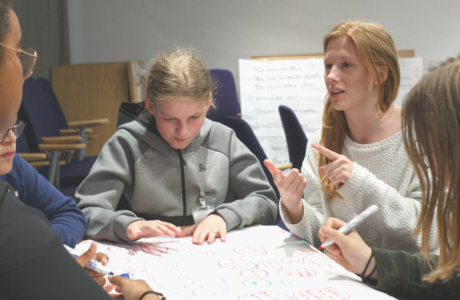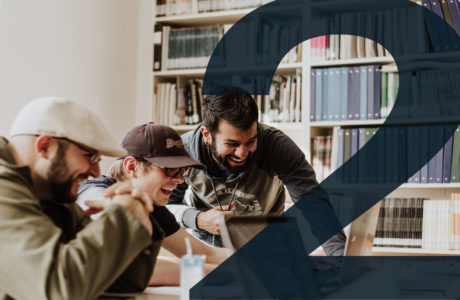We use learn by doing to help clients learn as we work, supporting different learning styles and knowledge integration. This process happens during a project to foster continuous improvement, both individually and organization-wide — learning as we go.
For today’s busy teams, it often feels like we’re always “catching up” on the latest-and-greatest thing. Let’s face it: learning new things with a fully developed brain (i.e. we’re no longer kids) beyond a basic understanding of theory is hard. I know all too well what it feels like to enroll in a 2-day class, attend a workshop, listen to a podcast, or watch a Youtube video—only to return to my daily work environment often feeling like I am unable to act on what I’ve heard and seen.
My personal journey in learning
My previous design team at Pixelbot started receiving design awards across North America — from the Canadian Regional Design Awards to Best of CES by CNET. However, there was always tension between the intended experience of the products and services we designed, and the business decisions that actually shaped and defined the customer’s experience.
In early 2014, I started hearing a lot about Service Design and Design Thinking. Suddenly, I felt lost in my own field. In the short period of a year, I transitioned from feeling like I was on top of the world, to feeling like I was suddenly in the dark ages. I’ll be the first to admit that I was scared. I thought to myself, “Even if I can learn this next skill or scenario, how can I possibly keep up with what will come next?”
Knowing that the rate of change in our world will only continue to exponentially grow, I wanted to re-design my own learning experience:
After prototyping my own learning experiences (and in the past year, coaching other teams in large organizations to learn in new ways) I can say that the biggest lesson I’ve learned is that adaptability is the secret sauce to innovation. Future-proofing how we learn as individuals, leaders, and teams is key to developing the unpredictable capabilities we’ll need in order to be ready for what’s next.
How might I design my learning experience where theory and action are interdependent with each other? How might I design it as a perpetual motion machine of creation, reflection, and application?
The barrier between theory and action
Our classic mental model of learning involves absorbing material followed by some variance of a test. Our entire lives, we’re trained to traditionally learn by reading books and listening to lectures, only to repeat back that same information in the form of multiple choice questions, essays, and presentations.
Yet, we know that the best results are achieved when the learner has someone they can shadow, has the time to be curious and ask questions, and has the safe space to play and try on different hats.
When the time comes to apply learned knowledge, we know that embracing new ways of thinking and working is another challenge in itself—sometimes new perspectives and tools are not supported by our colleagues and communities; sometimes we lack the material and mental capacity needed to employ the new tools and modes. Other times, new concepts can be so esoteric that we’re not quite sure how to start taking action at all.

What I’ve learned about learning
Inspired by Kolb and Fry’s Experiential Learning study, our team at The Moment wanted to see how a learn by doing experiential format could be applied to tackle innovation projects and build team capability.
The Moment’s Learn by Doing Framework:
We recognize that people take various approaches to learning. The learn by doing framework is great because not only does it take into account various learning styles, it also speaks to how we integrate new concepts and new ways of thinking into our work.
This ongoing cycle can be entered into at any stage:
- Thinking: How might we learn new concepts that could impact our work?
- Applying: How might we experiment with new tools that we’re curious about?
- Experiencing: How might we use new tools to complete our work?
- Reflecting: How might we reflect upon and evaluate our experiences with learning? What should we approach next?
The hidden mechanism is reiterating these stages of learning through the four modes in order to support learning styles and knowledge integration. This continuous process really has no end point; we foster continuous improvement, both individually and organization-wide.
People learn new concepts by tackling challenges rooted in reality
Over the past years, our team at The Moment has piloted various Innovation Management and Design Thinking learn by doing programs that are designed around getting real work done—and the results have been incredible. We’ve found that people learn new concepts by tackling challenges that are rooted in reality; doing so helps them to think boldly, and feel empowered and engaged. Often, client teams say to us, “Wow, I can’t believe we’re getting real work done at the same time!”
How to start your own learn by doing journey
Curious about setting up your own learn by doing journey? Here are three things you can tangibly do to help yourself and your team better adapt learners in today’s rapidly changing world:
1) Recognize that everyone learns differently
Everyone absorbs information through a different process and because of this everyone in the room will feel challenged by a different phase in the learning journey.
We identify and classify learners into four main categories:
- Generators: Those who enjoy getting things started
- Conceptualizers: Those who prefer to put ideas together
- Optimizers: Those who turn ideas into plans, and
- Implementers: Those who prefer to get things done
Understanding different learning styles, be it for ourselves or for our team, helps determine where in the learning journey we should start. Sometimes we start the learning process in reflection, which allows us to start by sharing our lived experiences, take that insight, and apply it to another experiment; other times it makes sense to start by experiencing, which allows us to engage with the material first before moving onto reflection.
2) Determine both project and learning objectives and goals for each type of learner
A learn by doing experience should always start by defining a successful outcome. This is a valuable and critical function of team alignment that often gets missed. In our experience, the end-goals of a learn by doing initiative can become confusing.
For example: If a team of 4 will be spending 2-days per week on a learn by doing initiative, what are the expectations of learning versus doing? Will 75% of that time be spent on learning? If so, how might we tailor the project output expectations to match that? Will 75% of the time be spent on doing? Similarly so, how might we tailor the expectations of learning outcomes to match that?
3) Select a challenge that’s appropriate for learn by doing
Because of the double-faceted nature of learn by doing initiatives, it is incredibly important to make sure that you and your team are set up for success. Pick the right project challenge to empower both learning and doing. Questions to consider may include:
- What is the level of visibility of this project? Is it appropriate for learning?
- What is the expected delivery date for this project? Is there enough time for learning?
- Are there additional resources I can pull into this project to create more space for learning?
- Does this project carry enough “weight”, in order to tell a compelling story at the end?
Changing the way we approach learning
We know that learning never ceases. But if all you’re learning is theory, in a bubble without any application, what good is that? If someone throws you into a situation where you have no knowledge or prior experience, that’s also not a great scenario. Learn by doing incorporates the two concepts that, in the end, augment one another: learning enhances how we apply the skills, and in applying the skills, we learn new things. The two work in concert.
Learn by doing helps us adapt our minds to new skills and ways of thinking – preparing us for what’s on the horizon, whether we see it or not.
I’m still very much on my own journey of better understanding this learn by doing-business in order to develop programs, frameworks, and tools to help future-proof teams for an uncertain tomorrow.
Set your team up for success.
Looking to embed learning into your Innovation Work? Step one is to set up the right team…Here’s a how-to Guide. It will walk you through everything from project team set up, to innovation frameworks, to scoping an agile design thinking process, ensuring your team—and your innovation ideas—have clear goals and outcomes, for both the project work, and the learning along the way.









